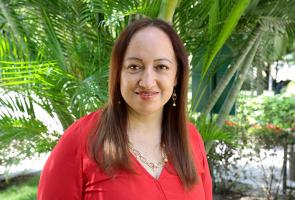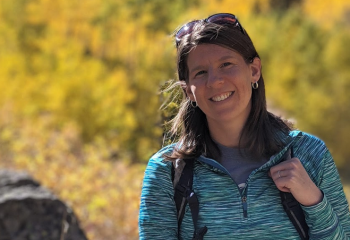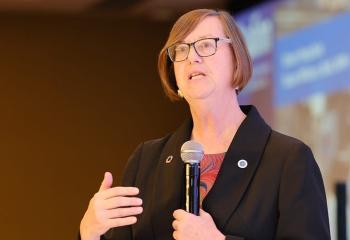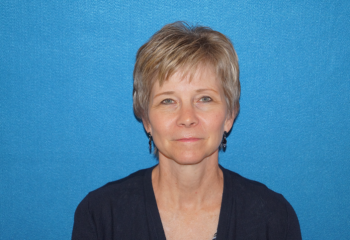—
What started as a small spark of interest at Jefferson College of Nursing grew into nursing faculty implementing climate and health education into their program to encourage students to think about taking climate action in their health policy, leadership, population health, and clinical courses.
When did you first become concerned about climate change as a health issue?
Dr. Lisa Whitfield-Harris: I grew up in Philadelphia where the largest environmental concerns were air quality and lead, and I have a background in population health. I just completed the Alliance of Nurses for Healthy Environments environmental fellowship, where I learned more about trash and incineration in the community. You can smell trash burning, but no one talks about it. Now, I focus on air quality issues for children.
Dr. Clara Granda-Cameron: I have always cared about the planet, our home. We are doing many things to hurt the planet. This is coming back against us as a human species.
Why did Jefferson College of Nursing choose to join the Nurses Climate Challenge School of Nursing Partnership?
Granda-Cameron: Dr. Dorothea Frederick, another faculty member, kicked this off. She started teaching about the impacts of climate change and how we as nurses could make a difference. It was very casual at the beginning, but we have enriched it. Nurses are educators at the bedside and in communities. Teaching nursing students about climate change is relevant because students transfer this knowledge to their patients.
Why do you think nursing students should learn about the health impacts of climate change in school?
Dr. MaryLou Manning: When students investigate climate change, they learn how it fits into their work.
Whitfield-Harris: Nursing students see patients every day in hospital and community settings. We teach them the importance of assessing the environment and the consideration of environmental impacts of health at all levels.
Collectively, you have educated over 350 nursing students in one semester. How have you been using the Nurses Climate Challenge resources?
Granda-Cameron: I created a module in my health policy course about climate change where I used the materials from the Nurses Climate Challenge and some supplementary content I pulled together. I gave a pre- and post-survey using the CHANT (Climate, Health, and Nursing Tool). Students were assigned to participate in a discussion board about climate change to share what they learned and propose an action they could take at their work site.
Whitfield-Harris: I use the Nurses Climate Challenge resources for a doctoral clinical course with 50 nurse anesthesia students. The students perform a community assessment for their zip code and focus on issues like fracking or air quality. Then, they compare that environmental issue with a group member to see how the actions in one area impact the environment. This summer I will also use it in my masters course, “clinical prevention and population health.”
Manning: In my doctoral leadership course, students use a change theory to make a proposal to a leader. They choose between studying climate change, antibiotic resistance, or precision health (or a combination). The assignment is different from anything they’ve ever done. They create a presentation using a Pecha Kucha format (20 slides, 20 seconds per slide). Of the 75 students, the majority selected climate change.
Tell us more about the students you have educated. What has been the reaction of your audience? What has been challenging?
Whitfield-Harris: At first, this topic was new for my students. I had to move slowly and answer a lot of questions. Starting earlier is better, like during their undergraduate or even in high school careers.
Manning: Our job is to develop awareness. Once students gain awareness, some of them really latch on and take it further.
Granda-Cameron: I’ve had several students share that they’ve also become members of the Nurses Climate Challenge. Our associate dean for academic affairs for the College of Nursing is also very interested in climate change. She created a workgroup that is mapping climate change and health throughout the curriculum. The plan is to incorporate the concept of climate change in those courses where there are good opportunities for teaching-learning.
Why should other nursing schools join the Nurses Climate Challenge? How does it support future nurses in protecting their patients from the health impacts of climate change?
Granda-Cameron: We are educators: nurses are educators. Teaching patients, families, and communities is part of our curriculum. Nurses have a close and trusted relationship with the community. We need to educate students about how we take care of the planet at the core of society.
Whitfield-Harris: This is a crisis. We must start now to protect our future generations.
The Jefferson College of Nursing main campus is located in Philadelphia, Pennsylvania. Over 600 undergraduate and 800 graduate students are enrolled in nursing programs, including the BSN, MSN, and DNP programs in multiple specialties. The mascot of Jefferson College is the ram.




